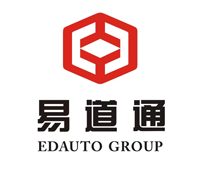Leapmotor has announced a joint venture with leading European automotive company Stellantis Group, a move that reflects the Chinese electric vehicle (EV) maker’s resilience and ambition. This cooperation resulted in the establishment of Leapmotor International, which will be responsible for the sales and channel development of Leapmotor products in Europe and other international markets. The initial phase of the joint venture has begun, with Leapmotor International already exporting the first models to Europe. It is worth noting that these models will be assembled at the Stellantis Group’s factory in Poland, and it plans to achieve localized supply of parts to effectively cope with the strict tariff barriers of the European Union (EU). China’s tariff barrier for imported electric vehicles is as high as 45.3%.
Leapmo’s strategic partnership with Stellantis highlights a broader trend of Chinese auto companies entering the European market amid the challenges of high import tariffs. This determination has been further demonstrated by Chery, another leading Chinese automaker, which has chosen a joint venture production model with local companies. In April 2023, Chery signed an agreement with local Spanish company EV Motors to reuse a factory previously closed by Nissan to produce Omoda brand electric vehicles. The plan will be implemented in two phases and will ultimately achieve an annual production capacity of 150,000 complete vehicles.
Chery’s partnership with electric vehicles is particularly noteworthy because it aims to create new jobs for the 1,250 people who lost their jobs due to the closure of Nissan’s operations. This development not only reflects the positive impact of Chinese investment in Europe, but also reflects China’s commitment to promoting the local economy and job market. The influx of Chinese automotive investment is particularly evident in Hungary. In 2023 alone, Hungary received 7.6 billion euros in direct investment from Chinese companies, accounting for more than half of the country’s total foreign investment. The trend is expected to continue, with BYD planning to build electric vehicle plants in Hungary and Turkey, while SAIC is also exploring the possibility of building its first electric vehicle factory in Europe, possibly in Spain or elsewhere.
The emergence of new energy vehicles (NEVs) is a key aspect of this expansion. New energy vehicles refer to vehicles that use unconventional fuels or advanced power sources and integrate cutting-edge technologies such as vehicle power control and drive. This category covers a variety of vehicle types, including battery electric vehicles, extended range electric vehicles, hybrid electric vehicles, fuel cell electric vehicles and hydrogen engine vehicles. The growing popularity of new energy vehicles is more than just a trend; It represents an inevitable shift towards sustainable transportation solutions that benefit the global population.
One of the most distinctive features of pure electric vehicles is their zero-emission capability. By relying solely on electrical energy, these vehicles produce no exhaust emissions during operation, significantly reducing their impact on the environment. This is consistent with global efforts to combat climate change and promote cleaner air quality. Additionally, studies show that electric vehicles are more energy efficient than traditional gasoline-powered vehicles. When crude oil is refined, converted into electricity, and then used to charge batteries, the overall energy efficiency exceeds that of refining oil into gasoline and powering an internal combustion engine.
In addition to environmental benefits, electric vehicles also feature simpler structural designs. By harnessing a single energy source, they eliminate the need for complex components such as fuel tanks, engines, transmissions, cooling systems and exhaust systems. This simplification not only reduces manufacturing costs but also improves reliability and ease of maintenance. Additionally, electric vehicles operate with minimal noise and vibration, providing a quieter driving experience both inside and outside the vehicle.
The versatility of electric vehicle power supplies further enhances their appeal. Electricity can be generated from a variety of major energy sources, including coal, nuclear energy and hydroelectric power. This flexibility alleviates concerns about oil resource depletion and promotes energy security. Additionally, electric vehicles can play a vital role in optimizing grid efficiency. By charging during off-peak hours when electricity is cheaper, they can help balance supply and demand, ultimately making electricity generation more economically viable.
Despite the challenges posed by high import tariffs, Chinese electric car manufacturers remain firmly committed to expanding their business in Europe. Establishing joint ventures and local production facilities not only mitigates the impact of tariffs, but also promotes economic growth and job creation in host countries. As the global automobile landscape continues to develop, the rise of new energy vehicles will surely reshape transportation and provide sustainable solutions that benefit people around the world.
All in all, the strategic moves of Chinese car companies such as Leapmotor and Chery reflect their firm commitment to the European market. By leveraging local partnerships and investing in production capabilities, these companies not only overcome tariff barriers but also make a positive contribution to the local economy. The expansion of new energy vehicles is an important step towards a sustainable future and highlights the importance of cooperation and innovation in the global automotive industry.
Post time: Oct-21-2024





